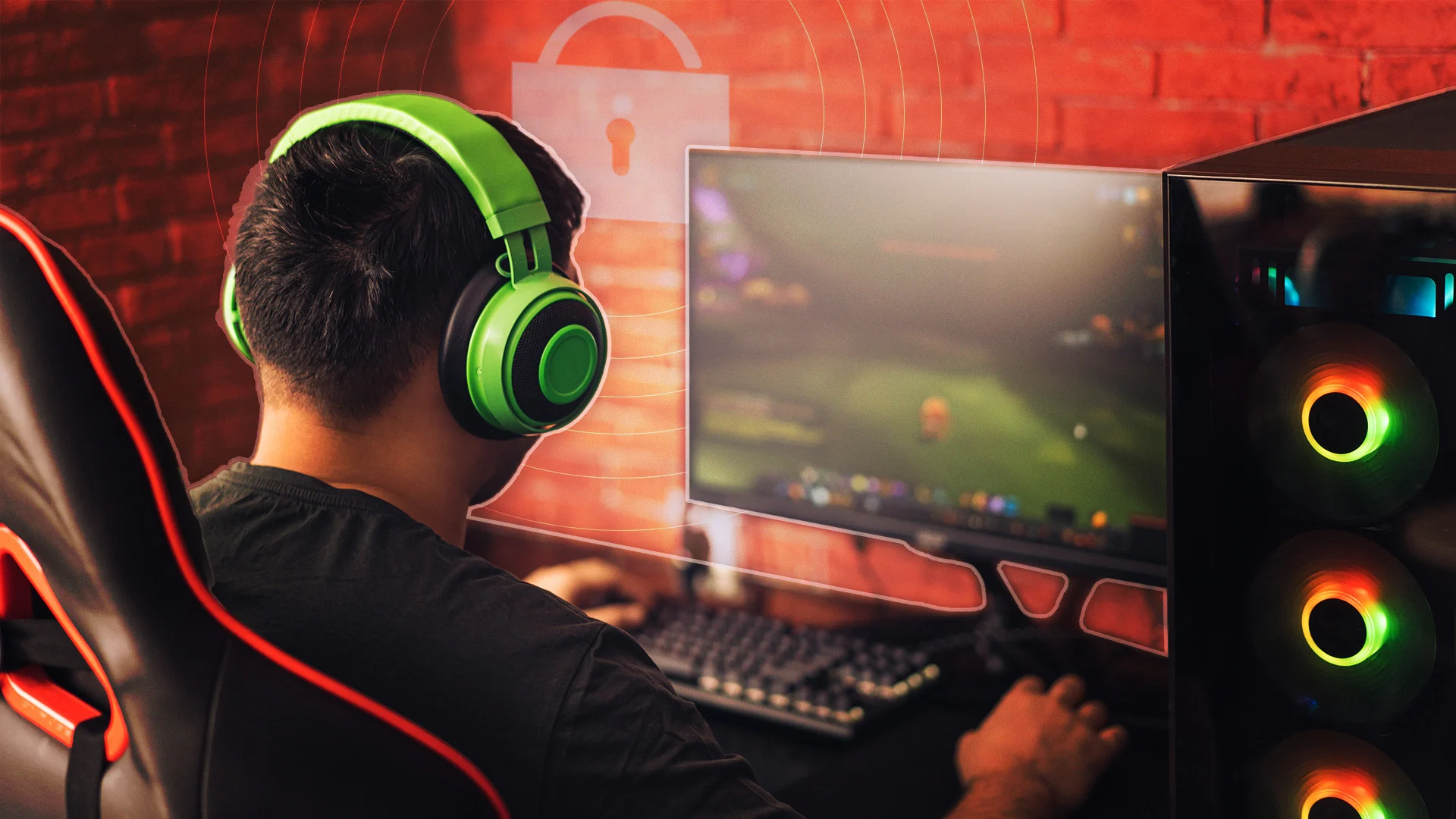Assassin’s Creed Shadows Review: A Deep Dive into Feudal Japan
Atarita editors have meticulously reviewed Assassin’s Creed Shadows, pouring hours into objectively analyzing every detail. See our review policy to learn more about our process.
*Assassin’s Creed Shadows’ PC review copy was provided to Atarita by Ubisoft.*
After a quiet period, excluding the 2023 release of Mirage, the Assassin’s Creed series is back. Pre-release discussions were intense, creating a rollercoaster of expectations. But how does the final product fare? Welcome to our Assassin’s Creed Shadows review. After 50 hours of gameplay, we’re sharing our experiences, what to expect, and the game’s key innovations.
# Assassin’s Creed Shadows: More Than We Thought!
After the initial announcement and gameplay reveals, we predicted that the game could be “more than you think!” This was based on lowered expectations for the series and the positive impressions from early footage. Now, having played it extensively, we can confirm that Assassin’s Creed Shadows offers a lot more than expected. It’s a delicious blend of bold changes, small but meaningful innovations, and familiar Assassin’s Creed elements.
# Animus Narrative Integrated into the Experience
Remember how in Assassin’s Creed Valhalla, characters entered the Animus to relive Eivor’s Viking-era adventures? The Animus, once a narrative tool presented through cinematics, is now directly integrated into the gameplay experience. From the moment you launch the game, you’re entering the Animus. The main menu is now the “Animus Hub.”
The Animus Hub allows you to launch other Assassin’s Creed games directly, similar to Call of Duty’s system. It features four sections:
* Memories: A timeline displaying other recent Assassin’s Creed games, launchable if installed.
* Projects: Regularly updated missions that reward “Keys” for completing in-game tasks. These Keys can also be found in the open world.
* Exchange: Redeem your Keys for in-game cosmetics and premium rewards.
* Vault: A repository for collected data files, videos, and series lore.
While this Animus integration is a welcome addition, removing it from the core narrative feels like a loss. The overarching Animus story added a unique flavor to the series. Though a mysterious character called “The Guide” offers cryptic explanations at the beginning, it’s not quite the same.
# Engaging Story, Weak Dialogues
Assassin’s Creed Shadows’ story starts fragmented, with Naoe’s narrative unfolding alongside Yasuke’s until their paths converge. Driven by revenge, the initial story suffers from cliché dialogues, making it difficult to connect with the characters or events. However, perseverance pays off; after about 15 hours, the story becomes engaging, allowing for emotional investment. Prior to that, skipping cutscenes wouldn’t have resulted in significant loss.
When the two characters unite, the narrative expands, fostering a connection with both. As you delve into their backgrounds, you begin to understand their motivations, shaping your decisions on which character to use for each mission. The dialogue quality likely suffered from juggling two separate storylines.
While containing compelling narratives and unique characteristics, Shadows suffers from weak dialogue.
Playing with the Japanese voice acting is highly recommended. The game even offers an “immersive mode” that locks the audio to Japanese. While the lack of Turkish subtitles makes following the story more challenging, the Japanese voice acting enhances the experience.
In summary, the narrative is inconsistent, excelling in some areas but faltering in others. The quality difference between dialogues and cinematic scenes is striking, likely stemming from the two-character dynamic. However, if you enjoyed the narratives of previous action RPG Assassin’s Creed games, you’ll likely find something to appreciate here.
# Two Distinct Characters, Double the Fun
Assassin’s Creed Shadows features two playable characters: Naoe and Yasuke. As Ubisoft stated, you can play almost the entire game with either character. We split our playtime, 35% with Yasuke and 65% with Naoe. The ability to tailor the experience with adjustable settings allows you to play the Assassin’s Creed game *you* want.
Naoe: The Swift and Deadly Shinobi
Naoe is the fastest, most agile, and deadliest assassin in the series. Her speed, combined with new mechanics, opens up diverse playstyles. The grappling hook and crawl mechanics live up to the hype, making every moment with Naoe enjoyable.
The game offers an accessibility option to ensure all assassinations are successful. While initially turned off, the inability to consistently eliminate enemies despite meticulous planning became frustrating. Turning this setting on allowed for seamless stealth and silent takedowns, significantly enhancing the fun.
This approach does have drawbacks. The level system encourages challenging yourself and leveling up before attempting assassinations. Bypassing this makes enemies more dangerous, turning capture into a near-instant death sentence. Therefore, the difficulty isn’t lowered, but rather refocused to fit your desired playstyle. The enemy AI and reactions are also commendable.
The “Naoe” calligraphy was captured with Assassin’s Creed Shadows’ photo mode.
Naoe’s grappling hook is a game-changer. It allows for faster vertical traversal and access to new areas, cleverly integrated into level design. Scaling castle walls or swinging across gaps becomes effortless. While Assassin’s Creed Mirage had a similar mechanic, the grappling hook offers more freedom and strategic options when approaching objectives.
Furthermore, the crawl mechanic available to both characters is well-executed. Seamlessly integrated into the dynamic weather system, it allows for stealthy movement through carefully designed environments. Ubisoft’s 20 years of Assassin’s Creed experience shines through in the parkour and level designs.
Yasuke: The Samurai Who Inspires Awe and Fear
Yasuke caters to players seeking a sword-clashing action RPG experience. He’s less agile than Naoe, but compensates with brute strength. Parkour is cumbersome, but he can still climb some walls. His design encourages aggressive play, charging into enemy territory and cutting down foes. He’s a power fantasy, feeling like an “easy mode” when your level matches the area. His melee combat is enjoyable, and weapon variety allows you to fight at your own pace.
Yasuke’s real name is Diogo.
Ignoring pre-release controversies, Yasuke’s backstory feels somewhat rushed. Like Basim’s sudden transformation in Mirage, Yasuke quickly becomes a samurai. While not as abrupt, the reasons for Oda Nobunaga’s trust are unclear. Our limited knowledge of Japanese history prevents us from knowing if Nobunaga’s characterization aligns with historical accuracy. Regardless, Yasuke’s transformation from a slave to a samurai is unconvincing.
That said, his story features exciting action sequences and emotional moments. Despite the rushed narrative, the emotional intensity of this section is commendable.
The reactions of surrounding characters to Yasuke are both hilarious and justified. Seeing him inspires fear followed by reverence. This consistent reaction adds a humorous touch. Since we didn’t play Yasuke as much, the humor didn’t wear thin. It’s great that the open-world characters react to his uniqueness. After all, seeing a tall, muscular, black man in samurai armor would be alarming for a 15th-century Japanese citizen.
Of course, high-ranking characters quickly recognize him as “Nobunaga’s giant.” Naoe remains more anonymous during story missions.
After completing a mission, you’re prompted to choose which character to continue with.
Finally, let’s discuss the character switching mechanics. You can play the majority of the game with your chosen character. Only specific missions (related to their backgrounds) require playing as a particular character. Main missions also feature sections where you switch to the other character for brief periods. Outside these sections, you’re never forced to play as either character. Both characters have distinct playstyles and excel at what they do.
Our only complaint is the awkwardness of cutscenes featuring both characters. For example, after traveling a long distance, the other character suddenly appears in the frame without any contextual setup. They arrive out of nowhere and disappear just as quickly. This aspect felt disjointed.
# A Vast Open World with Abundant Activities
Assassin’s Creed Shadows boasts a truly vast open world. Led by the team behind Odyssey, the game throws you into a massive map. However, due to the action RPG elements, freely exploring the entire map is restricted early on. While Naoe can sneak around, the penalties for being caught are significant. The level system acts as an invisible barrier, deterring you from certain areas.
Spies Simplify Target Acquisition but Diminish Exploration
The open world features a new “discovery system” with numerous activities. First, let’s discuss the spies available in the map interface. As in Valhalla, rescuing people in random encounters allows you to recruit them as spies or gather information about points of interest. After a brief, cryptic scene, potentially interesting locations are marked on the map. Spies also reveal the locations of mission targets, which are generally described vaguely. Spies act as tools to pinpoint these targets. You have a limited number of spies, which replenish with each season change.
Spies reveal the precise locations of mission objectives on the map.
While we enjoyed using spies, we prefer the immersive experience of following clues and searching for targets ourselves. Spies are a helpful option for those who prefer a more direct approach.
Mini-Games and Activities Abound, Offering Decent Variety
While we always crave unique side quests, the repetition of open-world activities is inevitable. In this Assassin’s Creed Shadows review, you may think we’re setting the bar low, but that’s not the case. The game’s map offers diverse activities, and repetition takes a while due to the map’s scale. We appreciate the variety.
Naoe can perform the Kuji-Kiri ritual to relive scenes from her past, while Yasuke can challenge fellow students of his master to become Japan’s champion. Outside of these character-specific activities, you can create sumi-e drawings of rare animals or scenes, adding them to your collection. These relaxing activities provide a welcome contrast to the intense combat.
Assassin’s Creed Shadows Review
In addition to these mini-quests, you’ll find familiar activities like fort clearing and camp raiding, as seen in the previous trilogy (Origins-Odyssey-Valhalla). The enjoyable gameplay of both characters makes even these mundane tasks fun.
Ubisoft Excels at Open-World Design
While Ubisoft games face criticism, their open-world designs and attention to detail are undeniable. The new dynamic season system adds another layer of realism and immersion. You’ll see NPCs loving cats, chasing pets, or engaging in daily routines. Although interaction with these characters is minimal, this attention to detail enhances the world’s credibility.
Wildlife is also well-designed, with different animal populations in different regions. Deer are common in some areas, while monkeys are more prevalent in others. Winter has fewer animals, while spring features mothers with their young. These small details are satisfying and demonstrate thoughtfulness. Additionally, seeing children roaming cities and villages is a welcome addition. While children are often absent from games, Ubisoft manages to incorporate them effectively.
You need to wait for spring to photograph animals with their young for the sumi-e mini-games.
Season Transitions Enhance Core Gameplay
The game automatically cycles through the seasons, which directly affect stealth and travel options. This also triggers a soft reset: if you have a wanted level in a region, it resets; spy stocks replenish; and resource locations respawn. The map undergoes a soft reset, allowing you to revisit cleared areas.
While seasons affect stealth, the impact isn’t drastic. The benefits outweigh the drawbacks, and the challenges of winter or autumn don’t feel difficult enough. It would be enjoyable to anticipate the arrival of spring after enduring a harsh winter.
Small cutscenes accompany season transitions.
Overall, we’re pleased with the season changes and the diversity they offer. We just wish the challenges were greater. However, this isn’t a major issue, and those who enjoy it will appreciate it.
Base Building Similar to Valhalla
Assassin’s Creed Shadows’ base-building system resembles that of Assassin’s Creed Valhalla. You can place a blacksmith to upgrade equipment, expand your spy base to recruit more spies, and enhance other passive aspects of gameplay. You can also send allies you acquire throughout the story to your base, and then summon them as skills during battle. However, it doesn’t build significantly upon Valhalla’s system. You spend resources to develop and build, and can also decorate it as you please. While not particularly engaging for us, Sims-loving assassins who want to design their own hideout will likely enjoy this feature.
Great Music, Underutilized
Ubisoft teases us with fantastic music at the beginning and in certain spots before putting us in the “forget what you just heard” mode. Some tracks reminded us of The Rogue Prince of Persia, while other areas felt like they could have greatly benefited from similar music.
The rare use of vocal tracks in boss battles dramatically elevates the atmosphere, but their scarcity left us wanting more. Utilizing these better could have enhanced the game’s impact, especially given the middling story dialogues.
Tic-Tak Technique!
We were beginning to think that Ubisoft’s Anvil game engine hadn’t aged well with Assassin’s Creed Mirage. But then the bold dynamic season system showed what the new version could offer. While playing Assassin’s Creed Shadows, it felt like Ubisoft took its largest technical step in recent years. Environments, models, textures, intense particle effects, and the landscapes they create all look fantastic.
Based on Assassin’s Creed Shadows’ system requirements, we expected our PC system to run the game at medium settings with 50-60 FPS. That’s precisely what happened. We were then able to achieve very high frame rates by using FSR and frame generation features.
# System Specifications
* AMD Ryzen 5 5600X
* AMD Radeon RX 6650 XT
* 32 GB DDR4 RAM (Dual Channel)
* NVMe SSD
* Windows 11 (64-bit)
Anvil is Ubisoft’s internal game engine.
With the help of FSR and Frame Generation, our average FPS hovered around 90. Despite concerns about artifacts when using AI-powered frame generation, we experienced virtually no negative visual effects. The game satisfied us both visually and in terms of performance. We didn’t encounter any major bugs with parkour mechanics, missions, or other gameplay elements. However, we did notice systematic issues, such as bodies disappearing quickly and alarms re-activating as soon as we turned our backs.
It’s important to note that the version we played may differ slightly from yours, as our review version didn’t include the Day1 update at the time of writing. Your version will include this update.
The Settings Menu Deserves Its Own Section
The settings menu allows you to customize your gaming experience in great detail, from graphics to gameplay to voice acting. Ubisoft has been generous with customization options, allowing you to build your own gaming experience. You can increase the difficulty and the danger in stealth, or choose whether you want to receive guidance while exploring the map. The settings are truly beautiful, detailed, and liberating enough to let everyone create the Assassin’s Creed game of their dreams. This deserves commendation.
Assassin’s Creed Shadows Review
The settings also allow you to find the optimal settings for your PC system. The game seems very fair in terms of system requirements and provides a good idea of what you can sacrifice in order to increase your frame rate or vice versa. The level of detail we saw in both the gameplay and graphics quality settings is a model for other developers releasing their games on PC.
A Truly Long Game
It was previously announced that finishing the main story of the game would take 30 hours and completing the open-world events would take 80 hours. This is not correct. We finished the game’s main story in about 50 hours and left behind enough content that we could have played for another 50 hours or more. Even as you read this review, we may still be out there doing side quests.
In Short
In closing our Assassin’s Creed Shadows review, we can readily say that we really liked the game. The story-driven experience may not entirely satisfy players who want a pure Assassin’s Creed story due to setbacks and a disjointed sense of excitement caused by mediocre dialogues and interruptions in the narrative. The improvements in gameplay and the new open-world systems, however, are successful in creating an enjoyable game that can be played for hundreds of hours. Assassin’s Creed Shadows has become a great game that exceeds expectations. We hope you enjoy it as much as we did when you play it.
That’s all we have to say about Assassin’s Creed Shadows in this review. However, you can share any questions or concerns that you feel haven’t been answered in the comments section. We’ll do our best to help you by answering them to the best of our ability. Stay loving and gaming.
Assassin’s Creed Shadows Review




